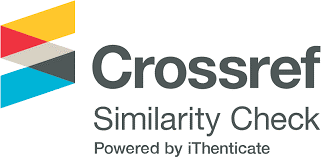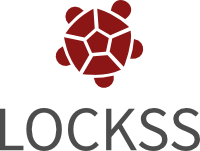12-Pulse Rectifier with Two DCM Boost-Type Half-Controlled Bridges for Variable- Input-Frequency Applications
DOI:
https://doi.org/10.18618/REP.2021.4.0017Keywords:
Boost Converter, Discontinuous Conduction Mode, High Power FactorAbstract
This paper presents the analysis of the integration of two three-phase half-controlled boost converters, operating in discontinuous conduction mode (DCM), to the auto-connected 12-pulse rectifier. The proposed structure shows a reduced current harmonic content compared to the traditional 12-pulse rectifiers, being a simpler and effective alternative to using rectifiers with higher pulse numbers. It also presents a greater range of possibilities for regulating the output voltage, without the use of synchronization algorithms or rigorous control techniques, being possible to send to all controlled switches, the same command signal, resulting in a simpler logic. Another advantage of using the proposed technique is the employment of a single-loop voltage control scheme, reducing the computational and financial cost by eliminating some elements such as current sensors. Moreover, the proposed strategy provides soft commutations (Zero-Current-Switching - ZCS). In this work, a small-scale prototype was implemented, aiming to obtain a structure capable to operate in a wide range of line frequencies, without requiring any additional complex techniques. In this regard, the developed structure is capable to work as a Power Factor Correction (PFC) stage in a wide range of input frequencies (30Hz - 120Hz) with a Total Harmonic Distortion of the input current (THDi) of less than 2.19%.
Downloads
References
[ 1]IEEE, "IEEE Recommended Practice andRequirements for Harmonic Control in ElectricPower Systems",IEEE Std 519-2014 (Revision ofIEEE Std 519-1992), pp. 1-29, June 2014.
[ 2]IEC, "Electromagnetic compatibility (EMC) - Part3-2: Limits - Limits for harmonic current emissions(equipment input current 16 A per phase)",IEC61000-3-2:2018, pp. 1-73, January 2018.
[ 3]D. Paice, I. I. A. Society,Power Electronic ConverterHarmonics: Multipulse Methods for Clean Power,IEEE Press, 1996.
[ 4]B. Singh, S. Gairola, B. N. Singh, A. Chandra,K. Al-Haddad, "Multipulse AC-DC Converters forImproving Power Quality: A Review",IEEETransactions on Power Electronics, vol. 23, no. 1, pp.260-281, January 2008. https://doi.org/10.1109/TPEL.2007.911880 DOI: https://doi.org/10.1109/TPEL.2007.911880
[ 5]S. P. P., R. Kalpana, B. Singh, G. Bhuvaneswari,"A 20-Pulse Asymmetric Multiphase StaggeringAutoconfigured Transformer For Power QualityImprovement",IEEE Transactions on PowerElectronics, vol. 33, no. 2, pp. 917-925, February2018. https://doi.org/10.1109/TPEL.2017.2721958 DOI: https://doi.org/10.1109/TPEL.2017.2721958
[ 6]D. L. Mon-Nzongo, P. G. Ipoum-Ngome, T. Jin,J. Song-Manguelle, "An Improved Topology forMultipulse AC/DC Converters Within HVDC andVFD Systems: Operation in Degraded Modes",IEEETransactions on Industrial Electronics, vol. 65, no. 5,pp. 3646-3656, May 2018. https://doi.org/10.1109/TIE.2017.2762646 DOI: https://doi.org/10.1109/TIE.2017.2762646
[ 7]Y. Wang, D. Panda, T. A. Lipo, D. Pan, "Performanceimprovement of dual-half-controlled-converter and itsapplications in utility rectifiers",in 8th InternationalConference on Power Electronics - ECCE Asia, pp.1711-1718, 2011. https://doi.org/10.1109/ICPE.2011.5944457 DOI: https://doi.org/10.1109/ICPE.2011.5944457
[ 8]M. M. Reis, B. Soares, L. H. S. C. Barreto, E. Freitas,C. E. A. Silva, R. T. Bascope, D. S. Oliveira,"A variable speed wind energy conversion systemconnected to the grid for small wind generator",in 2008 Twenty-Third Annual IEEE Applied PowerElectronics Conference and Exposition, pp. 751-755,2008. https://doi.org/10.1109/APEC.2008.4522805 DOI: https://doi.org/10.1109/APEC.2008.4522805
[ 9]D. S. Oliveira, L. H. S. C. Barreto, F. L. M. Antunes,M. I. B. V. Silva, D. L. Queiroz, A. R. Rangel,"A DCM three-phase high frequency semi-controlledrectifier feasible for low power WECS based on apermanent magnet generator",in 2009 Brazilian PowerElectronics Conference, pp. 1193-1199, 2009. https://doi.org/10.1109/COBEP.2009.5347648 DOI: https://doi.org/10.1109/COBEP.2009.5347648
[ 10]D. S. Oliveira, Jr., M. M. Reis, C. E. A. Silva, L. H. S.Colado Barreto, F. L. M. Antunes, B. L. Soares, "AThree-Phase High-Frequency Semicontrolled Rectifierfor PM WECS",IEEE Transactions on PowerElectronics, vol. 25, no. 3, pp. 677-685, March 2010. https://doi.org/10.1109/TPEL.2009.2034263 DOI: https://doi.org/10.1109/TPEL.2009.2034263
[ 11]J. C. Pelicer, F. J. M. de Seixas, A. C. de Lourenço,L. Silva, "Novel isolated multi-pulse rectifiers with lowcurrent distortion using three-phase half-controlledboost converters",in 2015 IEEE 13th BrazilianPower Electronics Conference and 1st Southern PowerElectronics Conference (COBEP/SPEC), pp. 1-5,2015. https://doi.org/10.1109/COBEP.2015.7420059 DOI: https://doi.org/10.1109/COBEP.2015.7420059
[ 12]M. H. Granza, R. Gules, C. H. Illa Font, "Hybrid andThree-Level Three-Phase Rectifiers Using InterleavedDCM Boost Converters",IEEE Access, vol. 7,pp. 160168-160176, November 2019, doi:10.1109/ACCESS.2019.2951123. https://doi.org/10.1109/ACCESS.2019.2951123 DOI: https://doi.org/10.1109/ACCESS.2019.2951123
[ 13]S. Gangavarapu, A. K. Rathore, "Three-PhaseBuck-Boost Derived PFC Converter for More ElectricAircraft",IEEE Transactions on Power Electronics,vol. 34, no. 7, pp. 6264-6275, July 2019, doi:10.1109/TPEL.2018.2877509. https://doi.org/10.1109/TPEL.2018.2877509 DOI: https://doi.org/10.1109/TPEL.2018.2877509
[ 14]J. Chen, X. Zhang, C. Wen, "Harmonics Attenuationand Power Factor Correction of a More Electric Aircraft Power Grid Using Active Power Filter",IEEETransactions on Industrial Electronics, vol. 63, no. 12,pp. 7310-7319, December 2016 https://doi.org/10.1109/TIE.2016.2590990 DOI: https://doi.org/10.1109/TIE.2016.2590990
[ 15]K. Rajashekara, "More Electric Aircraft Trends [ Technology Leaders]",IEEE ElectrificationMagazine, vol. 2, no. 4, pp. 4-39, December2014. https://doi.org/10.1109/MELE.2014.2365621 DOI: https://doi.org/10.1109/MELE.2014.2365621
[ 16]J. Benzaquen, M. B. Shadmand, A. Stonestreet,B. Mirafzal, "A unity power factor active rectifier withoptimum space-vector predictive DC voltage controlfor variable frequency supply suitable for more electricaircraft applications",in 2018 IEEE Applied PowerElectronics Conference and Exposition (APEC), pp.1455-1460, 2018. https://doi.org/10.1109/APEC.2018.8341208 DOI: https://doi.org/10.1109/APEC.2018.8341208
[ 17]V. Yaramasu, B. Wu, P. C. Sen, S. Kouro,M. Narimani, "High-power wind energy conversionsystems: State-of-the-art and emerging technologies",Proceedings of the IEEE, vol. 103, no. 5, pp. 740-788,May 2015. https://doi.org/10.1109/JPROC.2014.2378692 DOI: https://doi.org/10.1109/JPROC.2014.2378692
[ 18]D. of Defense, "AIRCRAFT ELECTRIC POWERCHARACTERISTICS",MIL-STD-704 Rev F, March2004.
[ 19]F. J. M. d. Seixas,Conversores CA-CC de 12KW com elevado fator de potencia utilizandoautotransformador com conexao diferencial demultiplos pulsos, Ph.D. thesis, Universidade Federalde Santa Catarina, Centro Tecnologico. Programa dePos-Graduacao em Engenharia Eletrica, 2001
Downloads
Published
How to Cite
Issue
Section
License
Copyright (c) 2021 Revista Eletrônica de Potência

This work is licensed under a Creative Commons Attribution 4.0 International License.















